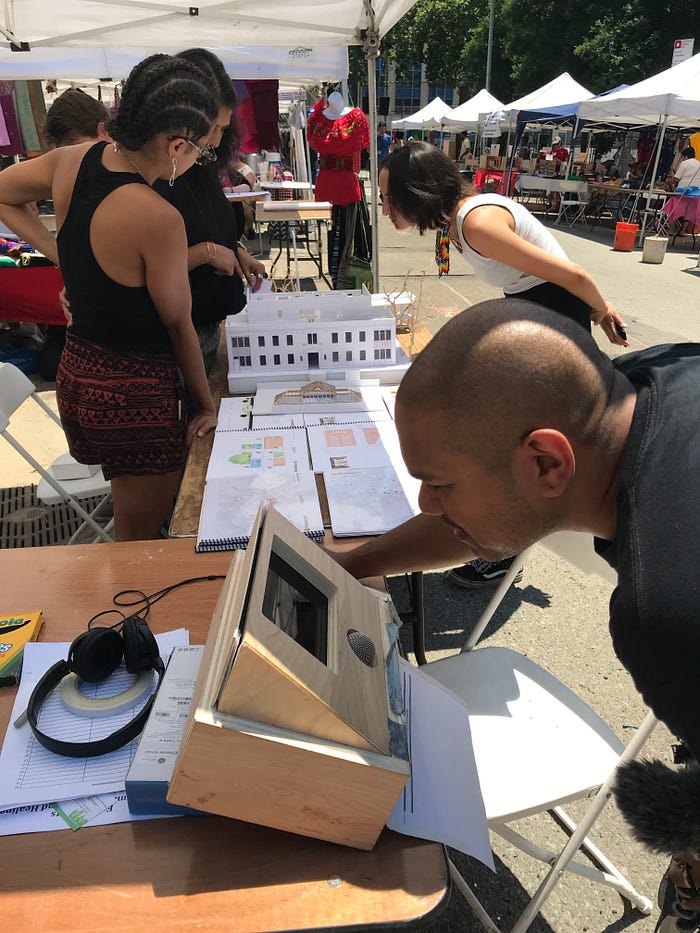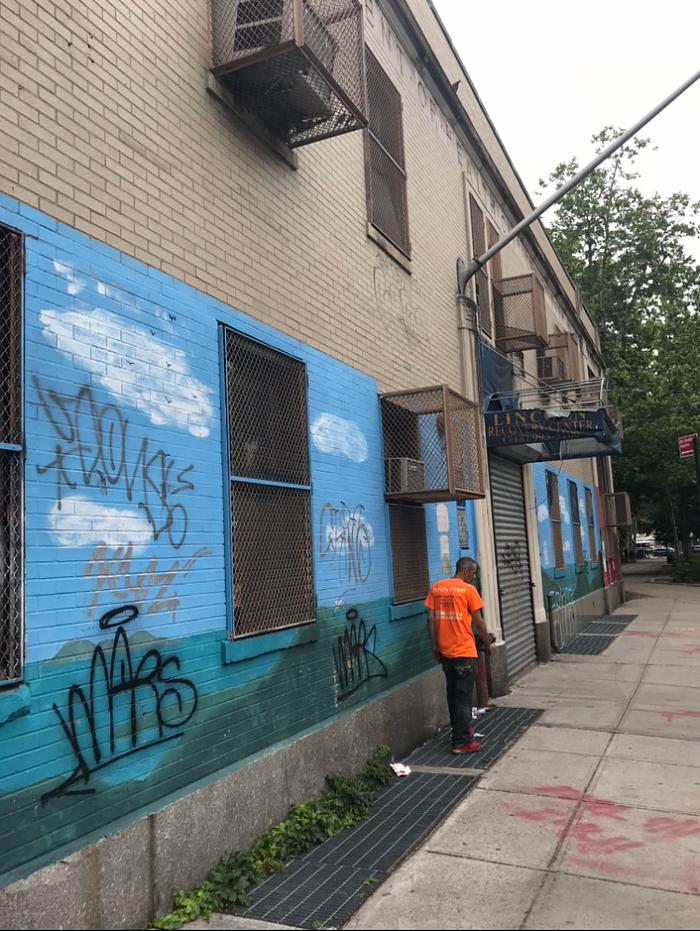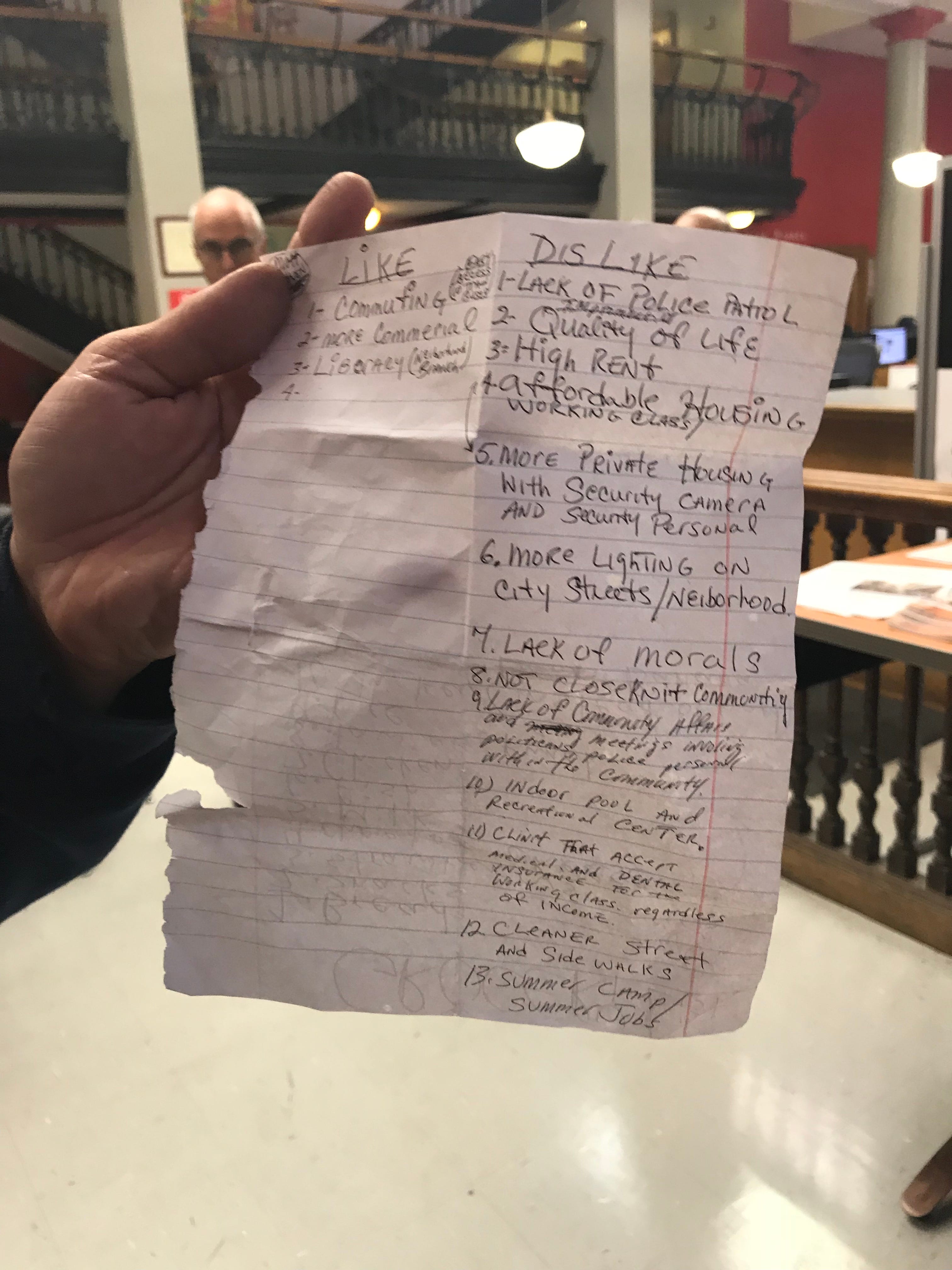Mott Haven Conversations: A Community Reporting Project in the South Bronx

The temperature rose to 97° this weekend in Mott Haven. At the 2nd Annual H. E. Arts Festival on 140th street, the sun melted the ice cooling the elote mayo while local officials gave speeches promising to fight for public space for the community.

Mott Haven, in the South Bronx, has a long history of community activism and organizing. Mychal Johnson and Monxo Lopez, co-founders of South Bronx Unite, organized this street fair in the cul-de-sac next to the former Lincoln Recovery Center. Starting in the late 1970s, the city-owned building housed a drug rehabilitation center and community hub. Today the building lies dormant. The community members behind South Bronx Unite want to rehabilitate the building to serve the needs of the community today. Their project, “Power in Place: Building Community Wealth and Well-Being in Mott Haven-Port Morris” won a grant from the Design Trust for Public Space to develop a community land trust. The street fair served as an opportunity to gather input from community members. Over 15 community organizations, from literacy programs to acupuncture bead advocates, showcased the range of local stakeholders committed to this project.
Gustavo Huerta, Sonia Colon and I were at the fair reporting for the Mott Haven Herald. The Herald is a monthly print paper and online news source based out of the Craig Newmark Graduate School of Journalism at CUNY. This summer we’re piloting some new community outreach projects in preparation for the new group of student reporters arriving this fall.
We’ve teamed up with the Laboratory for Social Machines at the MIT Media Lab. Andrew Heyward, a visiting scholar at the lab, connected us with technologists and fabricators from MIT. They built us a recording device and software interface (The Listening Box) to bring to community events. The box, currently in its first iteration, is made up of a USB microphone, a Lenovo tablet and a pair of headphones. The tablet connects to a web interface designed by Marc Exposito Gomez, a research assistant at the media lab.
The First Tests
Our first test with the box was a week-long residency at the Mott Haven branch of the New York Public Library. Community journalists and librarians share similar goals and missions and the librarians were accommodating and welcoming.






We preloaded the box with video footage of the neighborhood and the option to participate in English and Spanish.
Mott Haven is a heavily bilingual community and while the Herald currently publishes solely in English, we want to do more to make the reporting accessible for Spanish-speaking residents. After an instructional screen explaining the project, we included a consent page and then the prompt: “What do you like best and what do you like least about living here?”


Over the course of the week we spoke with over 100 people. More than 40 of those people agreed to record for the project in both English and Spanish. During the first test run we found out some useful strategies.
- Groups of two reporters are ideal. One team member should be the designated facilitator stationed at the box. This person helps guide participants through the recording process and captures names/emails/phone numbers for follow up questions. Team member #2 is the scout. They guide people over to the recording area and can help relieve the facilitator if needed
- Scout out the recording area before the day of the event to test wireless quality and audio recording quality. There’s nothing worse than getting to a location and having your gear not fulfill its function.
- If people tell you no, it doesn’t mean they aren’t interested. Being able to put a face to a news organization is incredibly valuable. We had several people want to compose their thoughts before coming back and recording. One father went home and came back the next day with a handwritten list that he read into the box. The opportunity to build trust and relationships with community members is incredibly important, especially in areas that are underreported when it comes to local news
- People love hearing what their neighbors have to say. We preloaded the box with some sample recordings I had gathered in the neighborhood before we set ourselves up in the library. The recordings elicited neighborhood pride and recognition and occasionally would act as an impetus for people to talk more and respond to what their neighbors had said. We plan to experiment more with this and find ways to create neighborhood conversations around topics that the reporters will be covering.
- Events can supercharge your outreach. Before the heat fried the tablet we were using, the recordings and conversations we had with people at the street fair were more focused than what we recorded at the library. At an event
Overall, we’ve noticed a strong desire for community connection. The Mott Haven Herald doesn’t have a physical office but we are able to gather community members together to convene around specific issues. This summer we’ll be bringing the box to more events and public spaces and putting together a database of recordings that incoming students can listen to as they orient themselves to the neighborhood in the fall. We’ll also be experimenting with different audio, video and text prompts.
The issues the community is working to improve are not always easy to overcome but the Mott Haven Herald is an essential tool and resource for the community.
More where this came from
This story is published in Noteworthy, where thousands come every day to learn about the people & ideas shaping the products we love.
Follow our publication to see more product & design stories featured by the Journal team.
